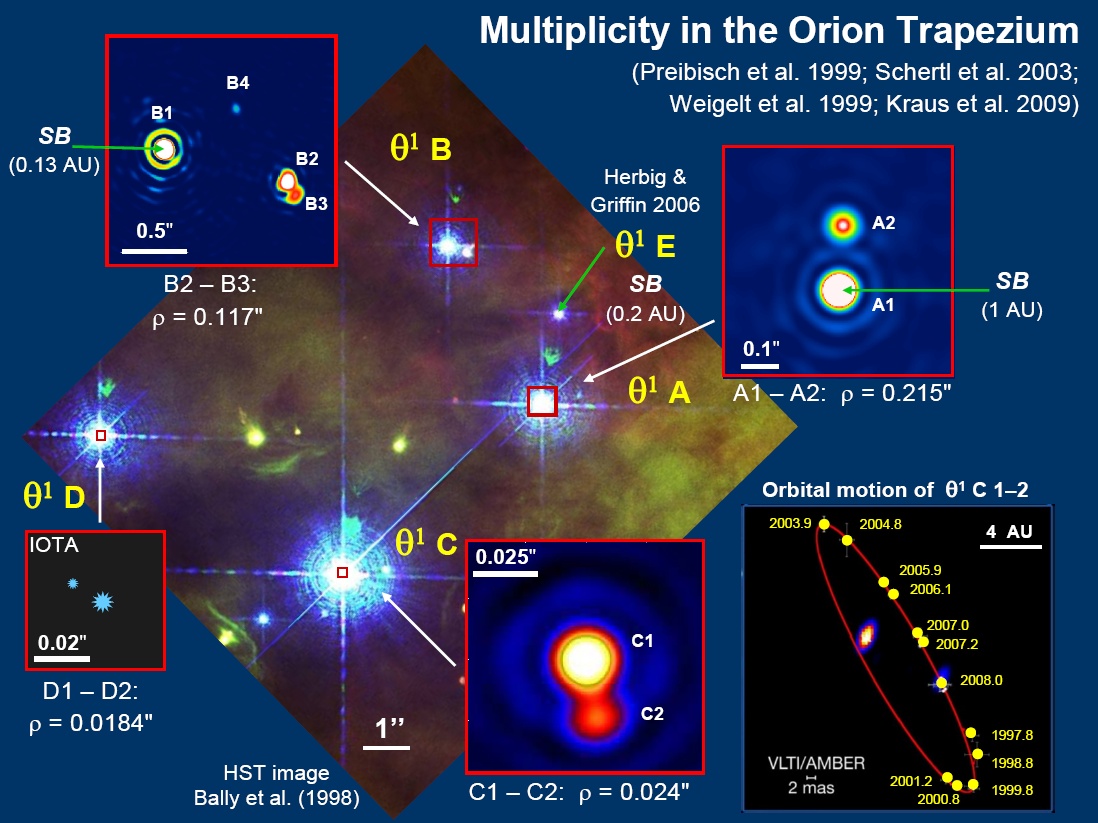
It is well known that single stars are a minority. Most stars in our galaxy are found in binary or higher order multiple systems. Thus, multiplicity is a major issue in stellar astrophysics and the formation of binary stars must be an integral part of any theory of star formation. We can hope to learn more about the star formation process by investigating the binary statistics of young stars. Another fundamental role of binary studies is to allow direct determination of the stellar mass, which is only accessible through the observation of gravitationally bound pairs of stars, by straight application of Kepler's third law. Our bispectrum speckle interferometry method is the leading method for obtaining diffraction-limited images of binary stars. One of the projects we have started is a speckle interferometric survey for binaries among the massive stars in the very young Orion Nebula cluster. Using the russian 6 m SAO telescope, we have obtained diffraction-limited images of the four brightest stars in the Orion Trapezium with an unprecedented resolution lambda/D of 57 mas and 76 mas in the near-infrared H- and K-band, respectively (see Weigelt et al. 1999, Astronomy & Astrophysics 347, L15) . The following images show a comparison of an Hubble Space Telescope image of the Trapezium system with our speckle images.

The H and K images and visibility functions of Theta^1 Ori C - the star responsible for the proplyds - show for the first time that Theta^1 Ori C is a close binary with a separation of only 33 mas. Our images also show the close companions of Theta^1 Ori A and Theta^1 Ori B. We have used the magnitudes and colors of the companions to estimate their stellar masses from the HR-diagram. We also have obtained K-band speckle reconstructions of 9 other bright Orion Nebula cluster member stars of spectral type O or B. We find 4 visual companions of these stars, all of which seem to be low- or intermediate-mass stars (see Preibisch et al. 1999, New Astronomy, 4, 531) . Considering both, the visual and the spectroscopic companions of the total sample of 13 target stars, the total number of companions is at least 14. Extrapolation with correction for the unresolved systems suggests that there are at least 1.5 companions per primary star on average. This number is clearly higher than the mean number of 0.5 companions per primary star found for the low-mass stars in the Orion Nebula cluster as well as in the field population. This suggests that a different mechanism is at work in the formation of high-mass multiple systems in the dense Orion Nebula cluster than for low-mass stars.
Our repeated observations of Theta^1 Ori C have allowed us to reconstruct the binary orbit and to determine the masses of the stars as well as the distance to the Trapezium system (see Kraus et al. 2009).